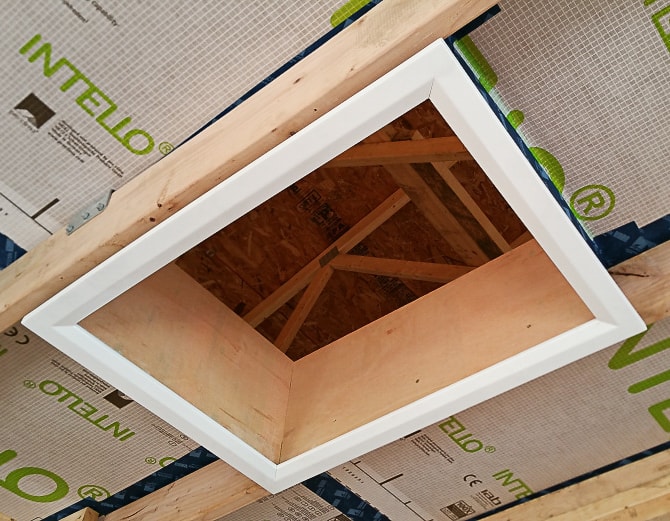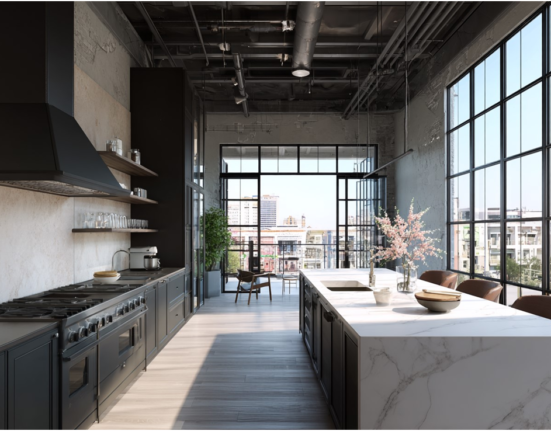Though ceiling access doors might be one of those things people often overlook, they can add value to any construction and renovation project. These hidden panels provide easy access to attic spaces and electrical and HVAC systems.
Whether you’re a contractor building a new space or remodeling an existing one, understanding the benefits of ceiling access doors is essential. This guide will help you choose the right doors and maximize their value.
Types of Ceiling Access Doors
It’s important to know different types of ceiling access doors to choose the right one. It can affect your project’s efficiency, aesthetics, and safety. Let’s explore common options in the market:
Magnetic Ceiling Access Doors: These doors are easy to install and remove, making them a top choice for quick access. People often use them in residential settings.
Fire-Rated Access Doors: These doors can temporarily delay the spread of fire. They are essential in commercial and residential buildings where fire safety is a priority.
Drop-In Ceiling Access Doors: Ideal for grid-type ceilings, these doors blend seamlessly with the surrounding tiles.
Drywall Inlay Ceiling Access Doors: These doors are completely flush with the ceiling, making them a preferred choice for aesthetic reasons.
Key Factors to Consider in Choosing a Ceiling Access Door
Purpose and Function
The primary purpose of the access door will dictate its size, material, and installation. Here are common uses:
Attic Access: For larger openings and frequent use, consider a sturdy, insulated door.
HVAC Maintenance: Easy accessibility is crucial. Opt for a door that’s quick to open and close.
Electrical Systems Access: Choose a door that provides secure access to breaker panels or wiring.
General Storage: If the door is primarily for storing items, insulation may not be as critical. You might also want to check the size if users and occupants need to store large equipment.
Knowing their intended use will help you narrow your options and select the most suitable ceiling access door.
Size and Dimensions
The size of the ceiling access door is crucial for ensuring easy access and proper functionality. Consider the required clearance for equipment such as ladders, HVAC tools, or insulation. Assess the available ceiling space to determine the maximum dimensions that can be accommodated.
While standard sizes exist, custom options may be necessary for specific needs. Carefully measuring the opening and considering future requirements will help you choose the right size access door.
Material Selection
The choice of material affects the door’s durability, weight, and resistance to environmental factors. Consider the place’s moisture levels, temperature fluctuations, and potential exposure to harsh conditions.
Common materials for ceiling access doors include:
Steel: This material is strong and durable, making it suitable for heavy-duty applications. However, it can be susceptible to rust and is heavy.
Aluminum: Lightweight and corrosion-resistant, aluminum is a popular choice for many applications. It provides good strength but may dent more easily than steel.
Plastic: Offers affordability and ease of installation. While suitable for lighter loads, plastic doors are less durable than metal options.
Glass Fiber Reinforced: Combines the strength of fiberglass with the flexibility of plastic, resulting in a lightweight and durable material.
Aesthetic Considerations
Some people want their access doors to look like they’re part of the ceiling. Fortunately, many manufacturers offer options to blend the door seamlessly with the surrounding ceiling design. They have flush mount designs and concealed hinges for a cleaner look. You can even paint or match the finish of some doors to the surrounding area.
Fire Rating
Fire safety is a major concern when choosing a ceiling access door, especially in commercial or multi-unit residential buildings. Local building codes will have specific requirements for the door’s fire rating, particularly in high-risk areas such as kitchens, garages, or utility rooms. Adhering to these regulations is essential for the preservation of life and structure.
In multi-unit buildings, for example, these doors can slow the spread of fires for a specific period, depending on their fire rating. This can minimize damage to other units and provide more time for evacuation.
Insulation and Energy Efficiency
Insulation is important in a building’s energy performance, and ceiling access doors are no exception. A well-insulated access keeps the space at a steady temperature by stopping heat gain and loss. This saves energy and makes the residential or commercial building comfortable for users and occupants.
Air sealing is equally important. Gaps around the door frame can allow conditioned air to escape, forcing the HVAC system to work harder. Most tenants want to conserve energy and lower their bills, so installing insulated ceiling doors can be a good move.
Future Accessibility
Considering the long-term implications of your choice is essential. Anticipate potential maintenance needs, such as replacing insulation or repairing electrical wiring.
Additionally, think about system upgrades that may require future access. The door should be easy to remove and reinstall to minimize disruption. By selecting a durable, well-constructed access door, you invest in long-term usability and convenience.
Compliance With Building Codes
Following building codes is crucial when selecting and installing a ceiling access door. These rules vary by location, so staying informed is important. Before buying an access door, consult your local building office about specific requirements for your project. This step helps you avoid fines, project delays, and potential legal issues.
Choosing a door that meets these codes ensures your installation is safe and legal. Remember, building codes exist to protect everyone. Checking and following these rules from the start helps your project go smoothly and keeps you out of trouble.
Conclusion
Ceiling access doors are often overlooked but crucial for efficient home construction and renovation. Understanding their types, factors to consider, and proper installation is essential. By carefully selecting the right door for each project and adhering to building codes, contractors can ensure optimal performance, safety, and homeowner satisfaction.














